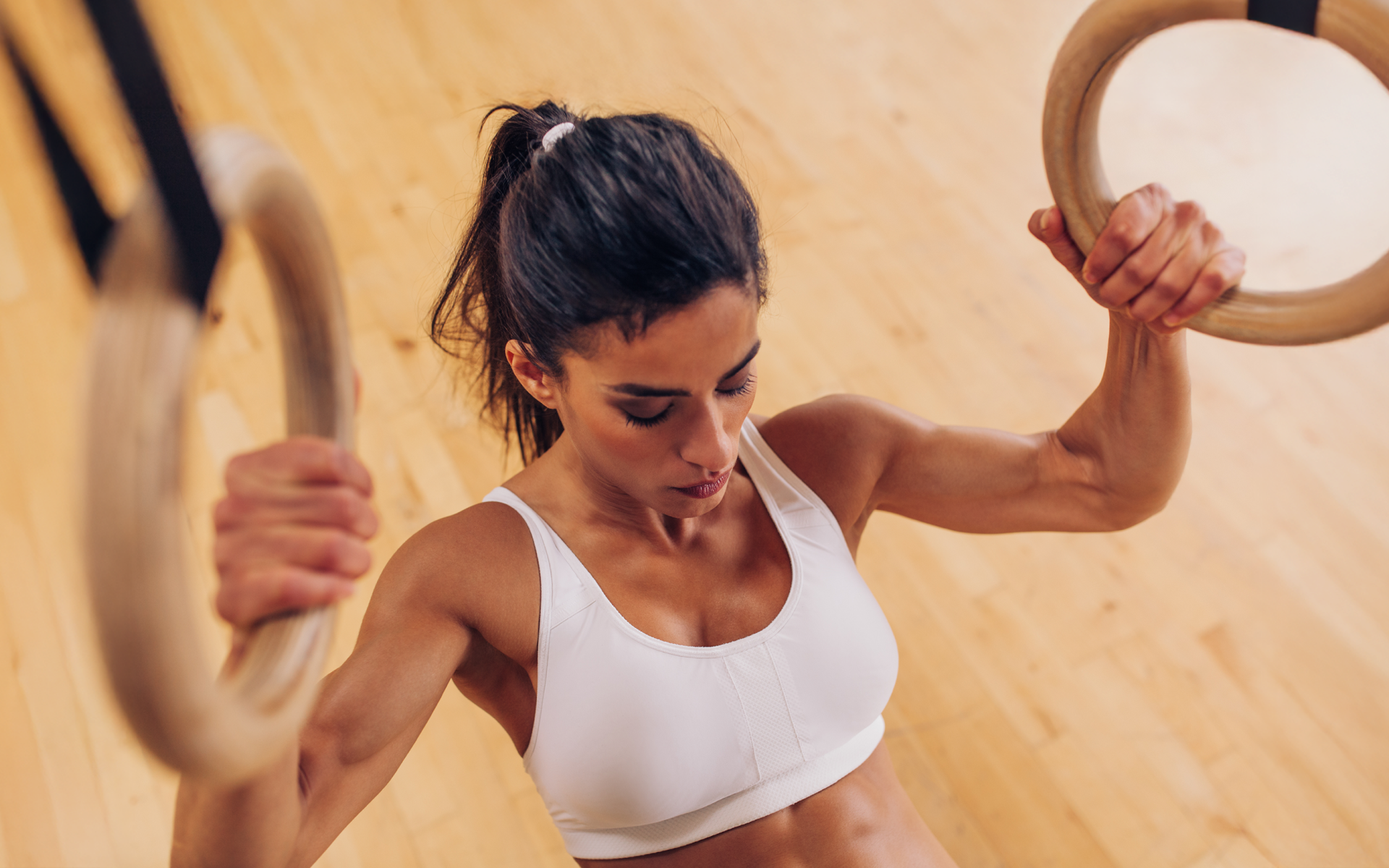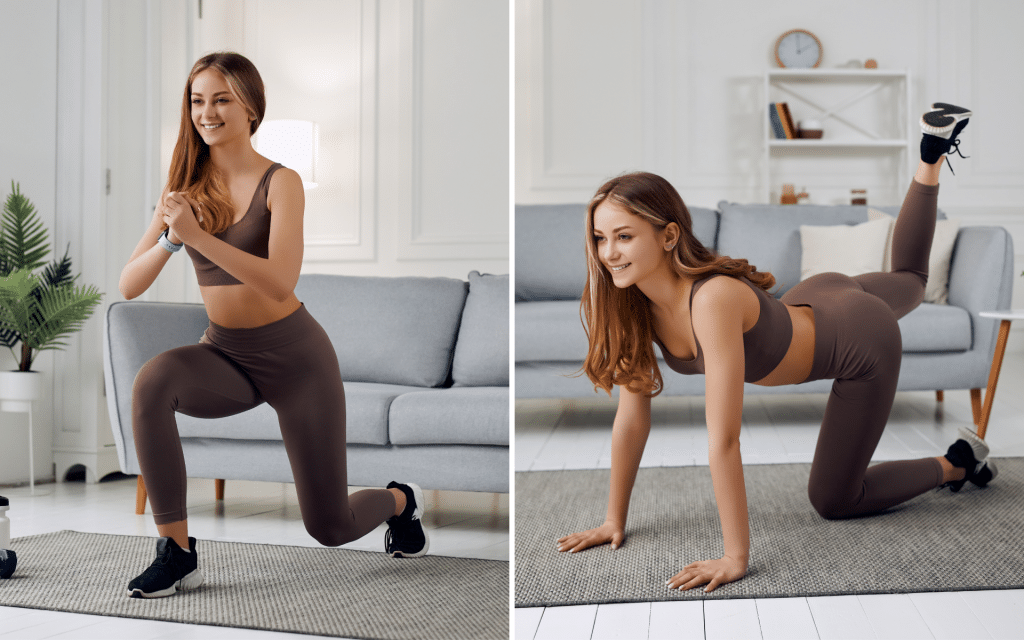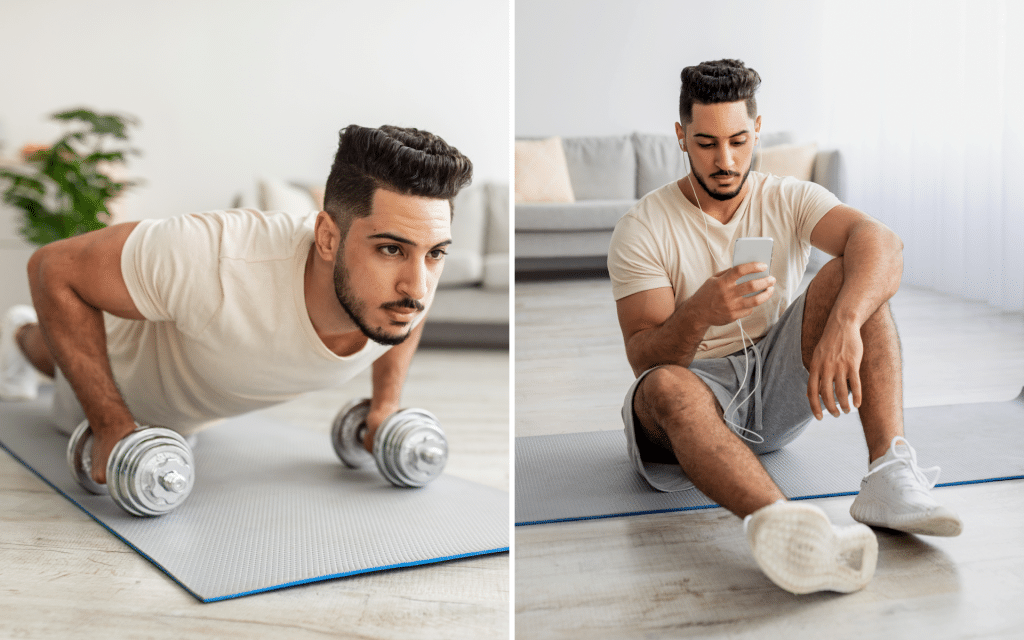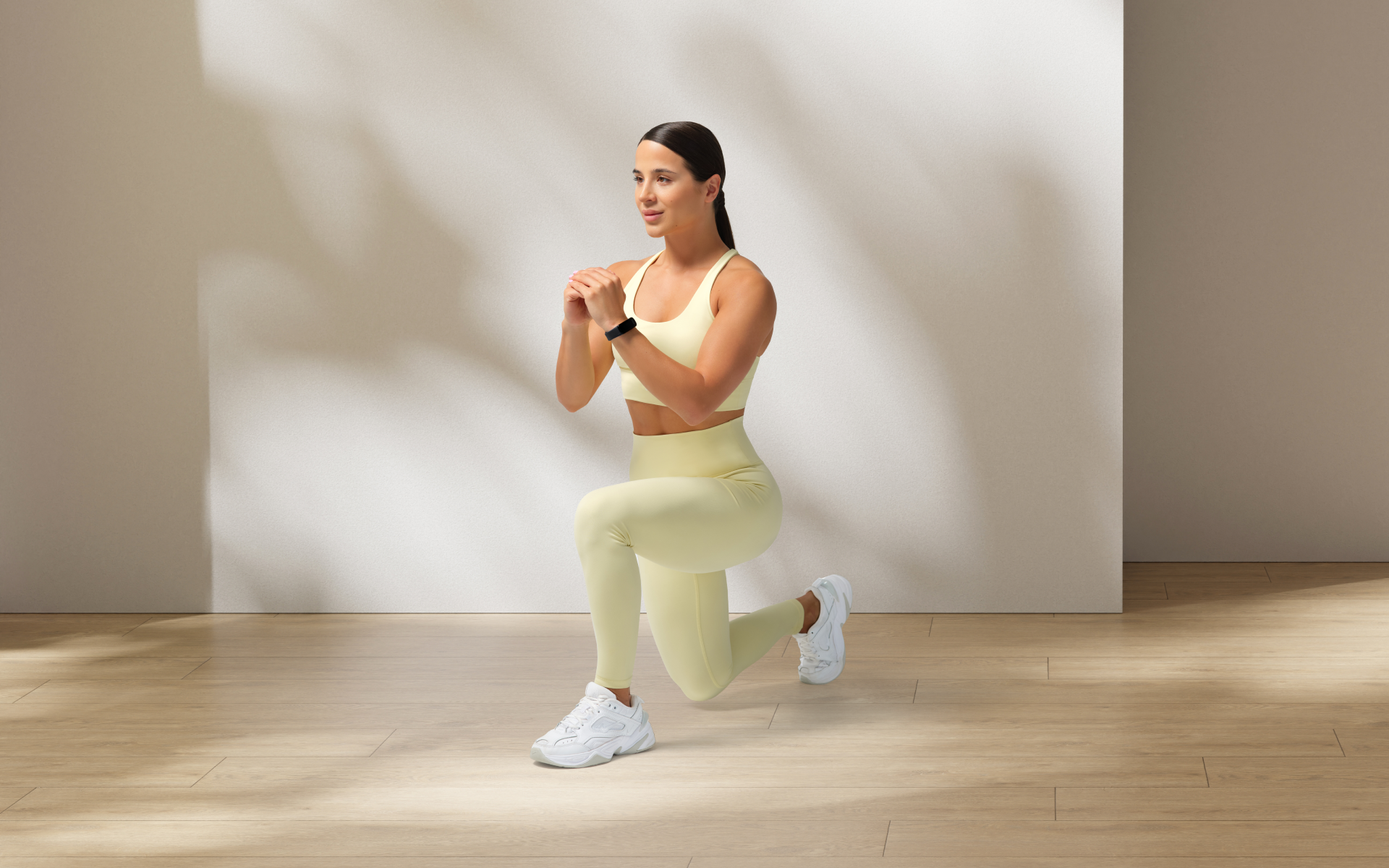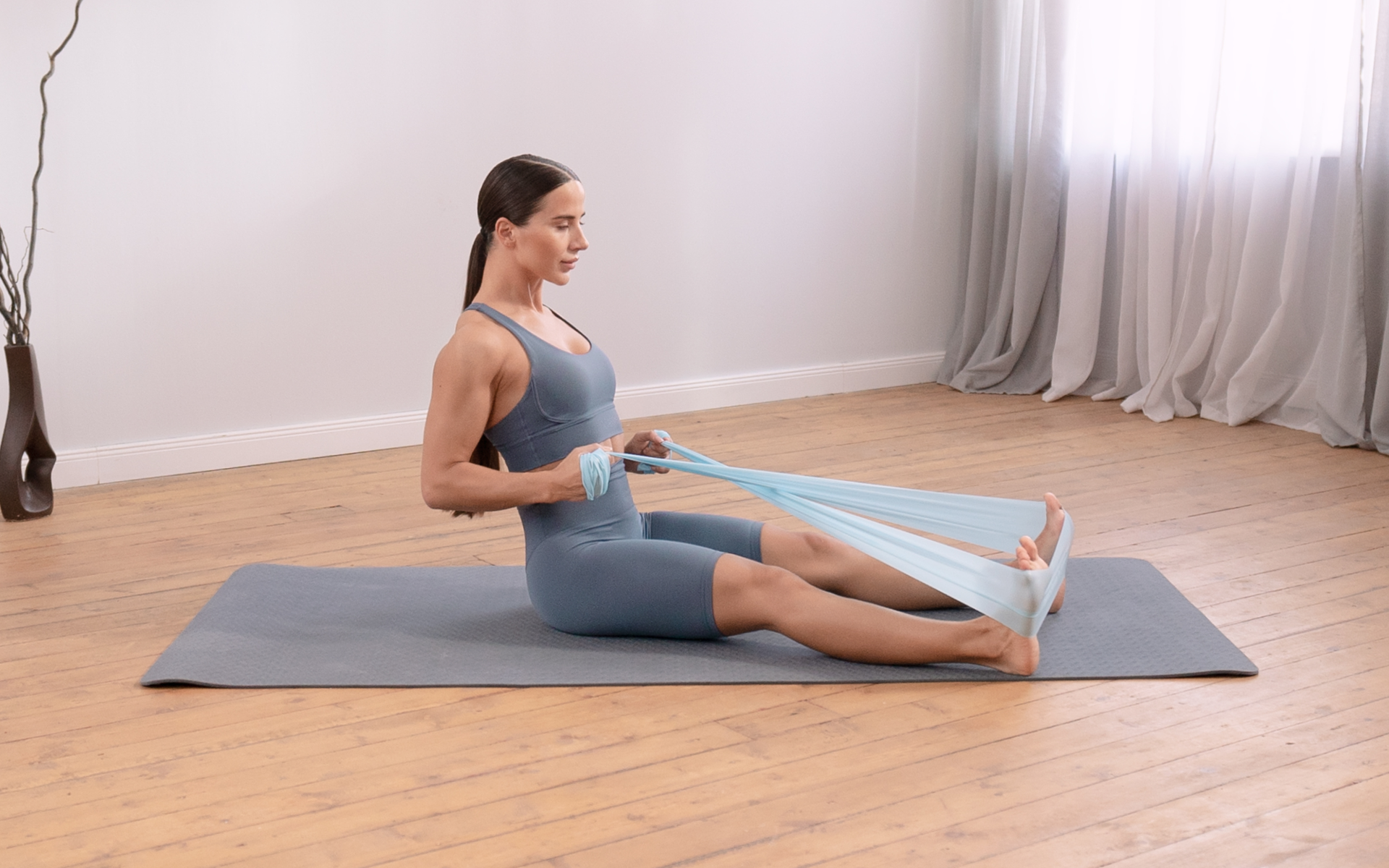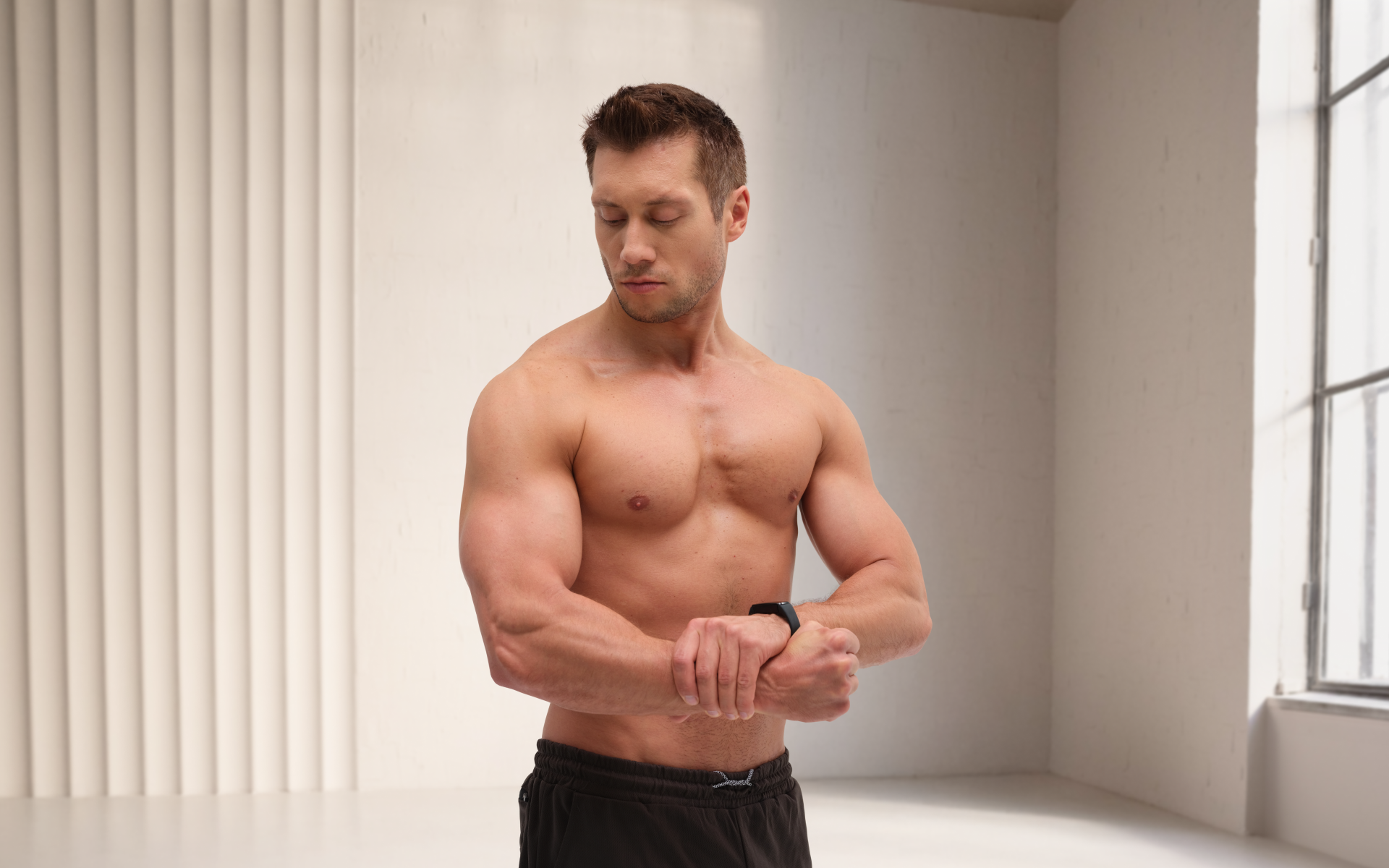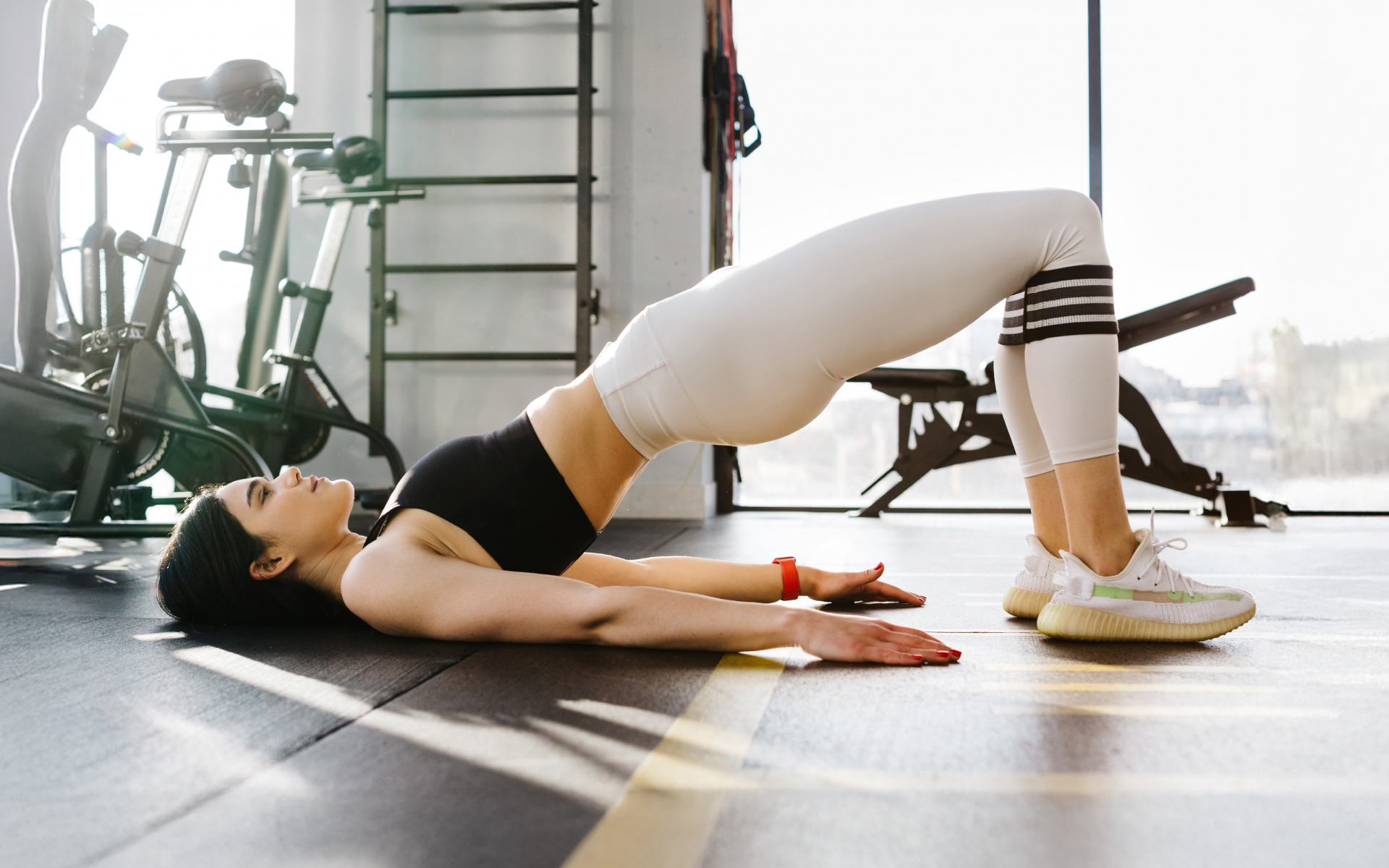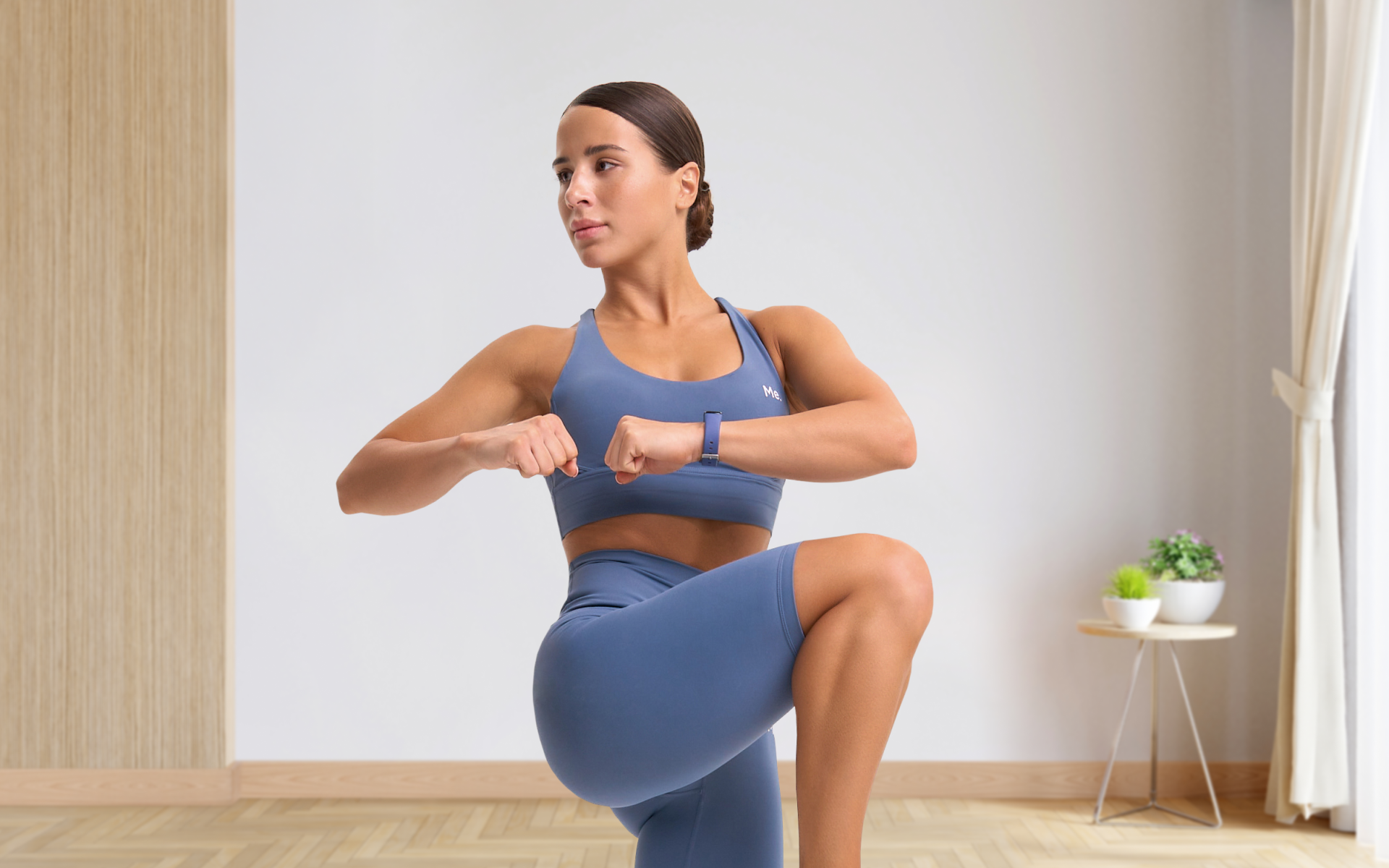Suppose you’re at a beginner level of calisthenics. In that case, you must know that starting calisthenics is smooth sailing until it’s time to switch to a more advanced calisthenics level and perform more complex mpoves.
Progression is essential to any workout plan (1) and is no different for calisthenics. As you become more skilled and stronger with the basic exercises, you can challenge your body with intermediate-level moves, the next step in the calisthenics journey.
We will take you through all you need to know about intermediate-level calisthenics, including the exercises and helpful tips to keep you going.
What is a Calisthenics Workout Plan for Intermediate?
Experts designed intermediate calisthenics workout plans for individuals consistently practicing basic exercises and are ready to take on more challenging moves. This level focuses on building strength, balance, and control through various bodyweight exercises.
These workouts often incorporate progressed variations of basic exercises such as push-ups, pull-ups, dips, squats, and lunges.
They also may involve more complicated movements like:
- Muscle-ups
- Handstands
- Pistol squats
- Human flags
The intensity of the exercises increases, requiring more strength and coordination from the body.
Research backs exercise progression as an effective way to build strength and improve overall fitness (1). An intermediate calisthenics workout plan follows a structured progression that gradually increases the difficulty of exercises, allowing your muscles and nervous system to adapt and develop.
How Should I Progress In Calisthenics?
To progress in calisthenics, you need to follow a few fundamental principles:
- Set goals: Define what you want to achieve in your workouts. This clarification will motivate and guide you in choosing the right exercises and tracking progress.
- Increase intensity gradually: As mentioned earlier, progression is gradual. Avoid jumping into advanced exercises before mastering the basics. Start by increasing reps and sets or decreasing rest time between sets before moving on to more challenging variations.
- Incorporate variety: Adding new exercises and variations can help prevent boredom and stimulate muscle growth (2). Just keep your routine manageable with all the different movements at a time.
- Train consistently: Consistency is vital in any workout plan. Aim for 3-4 days per week of calisthenics training to see progress.
And how should you know when you’re ready to advance to the intermediate level?
Whether you’re a workout beast or just a beginner making your first foray into the world of fitness and dieting – BetterMe has a lot to offer to both newbies and experts! Install the app and experience the versatility first-hand!
Many beginners need to pay more attention to this step as it varies from person to person, depending on factors like strength, mobility, and technique.
Some signs that you’re ready for intermediate-level calisthenics may include:
- Being able to perform 30 or more consecutive push-ups with good form
- Doing 15 or more consecutive strict pull-ups
- Holding a handstand against the wall for at least 30 seconds
- Completing a set of dips with added weight
- Having good mobility and control during exercises like squats and lunges
Remember that these are general guidelines, and listening to your body is best.
If you’re struggling with form or still need more time to build strength, staying at the basic level for a bit longer before advancing is okay.
We discussed this in detail in our Calisthenics Progressions article.
What Is the Best Workout Routine for Intermediate Trainees?
The best workout routine for intermediate calisthenics is one you can consistently follow and challenge your body. It should not be too challenging to hinder progress, but also not too easy to become stagnant.
A good workout routine should include a balance of pushing, pulling, and leg exercises spread throughout each week. You can also add core-specific exercises for strength and stability (3).
The number of sets and reps will depend on your strength level and the difficulty of the exercise, but aim for 3-4 sets of 8-12 reps for most exercises.
Feel free to increase the difficulty or add weight when necessary.
You will also need to ensure you have enough weekly training volume to make steady progress without adding too much volume to where you struggle to recover.
A good general rule for most intermediate trainees is performing 10-20 sets for each major muscle group or movement pattern weekly.
For example, you may split up your weekly program and divide these up throughout the week:
- 15 pushing exercises
- 15 pulling exercises
- 15 lower-body compound exercises
- You can also sprinkle in core and isolation exercises if desired, as long as they do not hinder your progress or recovery with the primary movement patterns.
Read more: Does Calisthenics Make You Stronger Than Weight Training?
How to Do Intermediate Calisthenics?
Doing intermediate calisthenics involves performing various exercises with proper form and control. Using proper form is possible by clearly understanding the exercises and consistently practicing them.
Although optional, additional equipment may be helpful as you move from beginner to intermediate-level calisthenics training. Some equipment that may be beneficial for continued gains include:
- Pull-up bar: Essential for performing pull-ups, chin-ups, toes-to-bar taps, and other hanging exercises that build upper body strength.
- Parallel bars or dip bars: Useful for dips and L-sits, focusing on the chest, triceps, and core muscles.
- Resistance bands: Help with assisted pull-ups and dips, providing adjustable resistance levels to progress gradually. You can also use them as resistance for a variety of exercises.
- Gymnastic rings: Allow various exercises that increase intensity by engaging stabilizer muscles.
- Plyometric box: Adds a dynamic element to workouts, perfect for box jumps and step-ups to enhance leg strength and explosiveness.
- Weight vest: Useful for adding extra load during exercises like push-ups, pull-ups, and squats, increasing resistance to build more strength.
Now let’s take a closer look at these intermediate variations:
1. Pull-ups
Engages: back, biceps, forearms
- Grip a pull-up bar with palms facing away from you and hands shoulder-width apart.
- Hang with your arms extended and engage your core muscles.
- Pull yourself up until your chin is above the bar, then slowly lower to the starting position.
Variations: Wide grip pull-ups, narrow grip pull-ups, commando pull-ups, and muscle-ups
2. Archer Push-Up
Engages: chest, shoulders, triceps
- Begin in a standard pushup position with your hands placed wider than shoulder-width apart. Your body should form a straight line from your head to your heels.
- Turn your fingers slightly outward to help with stability and range of motion.
- As you lower your body, shift your weight to one side. For example, if you’re turning to the right, bend your right elbow and keep your left arm straight. Your chest should move towards your right hand.
- Lower yourself until your chest is just above the ground. Your left arm should remain straight throughout the movement.
- Push through your right hand to return to the starting position. Keep your core engaged and your body in a straight line.
- Repeat the movement on the other side, shifting your weight to the left and bending your left elbow while keeping your right arm straight.
- Perform the desired number of repetitions, alternating sides with each pushup.
3. Muscle-Up
Engages: entire body, with a focus on back and arm muscles
- Start by hanging from a pull-up bar using an overhand grip.
- Use momentum to swing your legs forward while simultaneously pulling yourself up towards the bar.
- As you reach the top of the pull-up, transition your hands to an underhand grip and continue pushing your chest toward the bar until you fully extend your arms.
- To return to the starting position, reverse the movement by swinging your legs down and extending your arms to complete 1 rep.
Variations: Strict muscle-ups without momentum, wide grip muscle-ups, and weighted muscle-ups for advanced levels
4. Pistol Squat
Engages: quadriceps, hamstrings, glutes
- Start by standing with feet shoulder-width apart and arms extended in front of you.
- Lift one leg off the ground and begin slowly squatting down on your standing leg while extending the lifted leg in front of you.
- Once your thigh reaches parallel to the ground, push through your heel to return to the starting position to complete 1 rep.
Variations: Full-depth pistol squats, goblet pistol squats
5. L-Sit
Engages: abs, hip flexors
- Begin by sitting on the floor with legs straight out in front of you and hands beside your hips.
- Engage your core muscles and lift yourself so your body forms an “L” shape.
- Hold this position for the desired time, then lower yourself down slowly.
Variations: Tuck L-sit, straddle L-sit, and V-sit for advanced levels
6. Human Flag
Engages: entire body, with a focus on core and upper body muscles
- Find a sturdy vertical pole or bar that can support your body weight. Stand next to the pole with your body perpendicular to it.
- Place your top hand (the one closer to the top of the pole) in an overhand grip and your bottom hand (the one closer to the bottom) in an underhand grip. Your hands should be about shoulder-width apart.
- Tighten your core muscles to stabilize your body. Engaging your core is crucial for maintaining balance and control during the exercise.
- Begin by lifting your legs off the ground. Your goal is to get your body parallel to the ground, forming a straight line from your head to your feet.
- Hold the position for as long as possible once your body is parallel to the ground. Keep your core engaged and your body straight.
- Slowly lower your legs back to the starting position with control. Avoid dropping your legs quickly to prevent injury.
7. Clapping Push-Up
Engages: chest, shoulders, triceps
- Begin in a standard push-up position with hands shoulder-width apart.
- Perform a regular push-up, but as you push yourself up, use explosive power to lift your hands off the ground and clap them together before landing back in the starting position.
Variations: Advanced levels can try clapping behind the back or while wearing a weighted vest.
8. Tuck Planche
Engages: core, shoulders, triceps
- Start in a standard push-up position with hands shoulder-width apart.
- Tuck your knees towards your chest while extending your arms and supporting your body weight.
- Hold this position for the desired time, then slowly return to the starting position to complete 1 rep.
Variations: Advanced levels can try straddle planches, or full planche holds.
9. Handstands
Engages: shoulders, triceps, core
- Begin by facing a wall and placing your hands shoulder-width apart on the ground.
- Kick your feet up against the wall and use your core muscles to hold yourself in a straight handstand position.
- Hold for the desired time, then slowly lower yourself to complete 1 rep.
Variations: Advanced levels can try free-standing handstands or handstand push-ups.
10. Front Lever
Engages: entire body, with a focus on back and arm muscles
- Start by gripping a horizontal bar with an overhand grip at shoulder height.
- Use momentum to swing your legs forward and lift them towards the bar while simultaneously pulling yourself up and back until your body is parallel to the ground.
- Hold this position for as long as possible, then slowly lower yourself to complete 1 rep.
Variations: Advanced levels can try front lever pull-ups or holds on gymnastic rings.
4 Days Calisthenics Workout Plan for Intermediate
A four-day calisthenics plan for intermediate-level athletes could look like this:
Day 1: Push
- Warm up with 10-minute jog or jump rope
- Archer push-ups – 4 sets of 8-10 reps
- Clapping push-ups – 4 sets of 8-10 reps
- Tuck planche holds – 3 sets for max time
- Handstand push-ups – 3 sets of 8-10 reps
- Rest for one minute in between each set
Day 2: Pull
- Warm up with 10-minute jog or jump rope
- Wide grip pull-ups – 4 sets of 8-10 reps
- Muscle-ups – 4 sets of 5-8 reps
- Front lever holds – 3 sets for max time
- L-sit pull-ups – 3 sets of 8-10 reps
- Rest for one minute in between each set
Day 3: Legs
- Warm up with 10-minute jog or jump rope
- Pistol squats – 4 sets of 8-10 reps (each leg)
- Tuck jumps – 4 sets of 12-15 reps
- Bulgarian split squats – 3 sets of 8-10 reps (each leg)
- Calf raises – 3 sets of 12-15 reps
- Rest for one minute in between each set
BetterMe: Health Coaching app helps you achieve your body goals with ease and efficiency by helping to choose proper meal plans and effective workouts. Start using our app and you will see good results in a short time.
Day 4: Full Body
- Warm up with a 10-minute jog or jump rope
- Human flag – 4 sets for max time
- Tuck planche push-ups – 4 sets of 8-10 reps
- L-sit holds – 3 sets for max time
- Australian pull-ups – 3 sets of 8-10 reps
- Rest for one minute in between each set
Take the time to warm up properly before each workout and listen to your body, taking breaks as needed and modifying exercises if necessary.
End your workouts with a cool down and stretch to improve recovery (4).
Staying consistent and progressing with this four-day calisthenics plan as you’re able will help improve your strength, endurance, and stability.
If you want to work on your entire body every day instead of isolating muscle groups on most workout days, here is a sample full body calisthenics workout plan for intermediate level athletes.
Try following this workout plan 4-5 times a week:
Warm-up: 10-minute jog or jump rope
- Push-ups: 4 sets of 12-15 reps
- Pull-ups: 4 sets of 8-10 reps
- Dips: 3 sets of 10-12 reps
- Squats: 4 sets of 15-20 reps
- Lunges: 3 sets of 12-15 reps per leg
- Plank: 3 sets for max time
- Burpees: 3 sets of 10-12 reps
Rest: 1 minute between sets
This plan ensures you work all major muscle groups daily, promoting balanced strength and endurance (5).
Read more: Calisthenics Supersets: Effective Workouts to Build Strength and Endurance
Calisthenics workout no equipment?
No problem! You can modify these workout plans if you don’t have equipment such as the pull-up bar. Here are some practical pull-up bar alternatives that target similar muscle groups:
- Doorway Rows: Stand in a doorway, grab both sides, lean back, and pull yourself forward.
- Towel Rows: Loop a towel around a sturdy door handle, lean back, and pull yourself up using the towel.
- Inverted Rows: Use a sturdy table or two chairs with a broomstick to perform rows while lying underneath.
- Bodyweight Rows: Lie under a sturdy table, grab the edge, and pull your chest towards it.
- Reverse Elbow Push-ups: Lie on your back, push your elbows into the ground, and lift your upper body (6).
Find advanced moves in our Advanced Calisthenics blog.
How Long Does It Take to Build Muscle for Intermediate Trainees?
The time it will take to build muscle for intermediate-level athletes depends on several factors, such as genetics, diet, and consistency in training. However, with an effective calisthenics workout plan for intermediate male and females, paired with proper nutrition, it is possible to see results within a few months.
In general, most people can expect visible muscle changes within 8-12 weeks of consistent training. However, building muscle is an ongoing process that requires dedication and patience.
For intermediate athletes, training 4 to 5 days a week is ideal to maximize performance and development. This frequency ensures ample time for muscle recovery, which is crucial for avoiding injury and promoting growth (7). Not at all. Calisthenics is suitable for individuals of all ages. Even starting at 25, you can effectively build strength, flexibility, and endurance through these exercises. The great thing about calisthenics is that it adapts to your fitness level, allowing you to progress at your own pace. Age is just a number, and it’s never too late to begin your fitness journey. This Beginner Calisthenics Program would be the perfect place to get you started. The planche is often considered one of the hardest skills to master in gymnastics and calisthenics. Achieving this impressive move requires exceptional core and upper body strength, balance, and control. Patience and consistent practice are key factors in making this challenging skill attainable. However, no skill is universally the most challenging, as it depends on your strengths and weaknesses. Calisthenics is generally categorized into 3 primary levels: beginner, intermediate, and advanced. Each level features distinct skills and exercises tailored to the practitioner’s ability. A calisthenics workout plan for beginners focuses on foundational movements to build strength and form, while intermediates tackle more complex exercises that require greater control and stability. Advanced practitioners push their limits with challenging routines that demand high levels of strength, flexibility, and coordination. This structured progression allows individuals to develop their skills appropriately, ensuring safety and effectiveness in their training. Typically, a calisthenics session should last 45 to 60 minutes. This includes warm-up, workout, and cool-down periods. Adjust this time based on the intensity you need and your goals. Remember to listen to your body and take breaks as needed. Consistency is key for progress, so find a routine that works for you.Frequently Asked Questions
How many days a week should a intermediate workout?
Is 25 too old for calisthenics?
What is the hardest skill in calisthenics?
How many levels are there in calisthenics?
How long should a calisthenics session be?
The Bottom Line
You can refine your intermediate calisthenics skills and push your limits, adapting calisthenics further to boost your strength, flexibility, and endurance. Embrace new challenges to keep your workouts exciting.
Stay consistent, listen to your body, and celebrate your progress. With patience and dedication, calisthenics can enhance your physical and mental well-being. Keep pushing your limits and enjoy the journey of growth and discovery.
DISCLAIMER:
This article is intended for general informational purposes only and does not serve to address individual circumstances. It is not a substitute for professional advice or help and should not be relied on for making any kind of decision-making. Any action taken as a direct or indirect result of the information in this article is entirely at your own risk and is your sole responsibility.
BetterMe, its content staff, and its medical advisors accept no responsibility for inaccuracies, errors, misstatements, inconsistencies, or omissions and specifically disclaim any liability, loss or risk, personal, professional or otherwise, which may be incurred as a consequence, directly or indirectly, of the use and/or application of any content.
You should always seek the advice of your physician or other qualified health provider with any questions you may have regarding a medical condition or your specific situation. Never disregard professional medical advice or delay seeking it because of BetterMe content. If you suspect or think you may have a medical emergency, call your doctor.
SOURCES:
- Fundamentals of Resistance Training: Progression and Exercise Prescription (2004,paulogentil.com)
- Diversity in Training and Why It Matters: Five Good Reasons (n,d,strathconaphysicaltherapy.com)
- Effects of core strength training on core stability (2018,nih.gov)
- THE IMPORTANCE OF A WARM-UP & COOL-DOWN (n,d,online.uga.edu)
- The Best Full-Body Calisthenics Workout Plan To Build Muscle (2022, builtwithscience.com)
- No Bar? No Problem! Check Out These 9 Pull-Up Alternatives for Home (2022, garagegympower.com)
- The effect of rest days on injury rates (2011,nih.gov)
